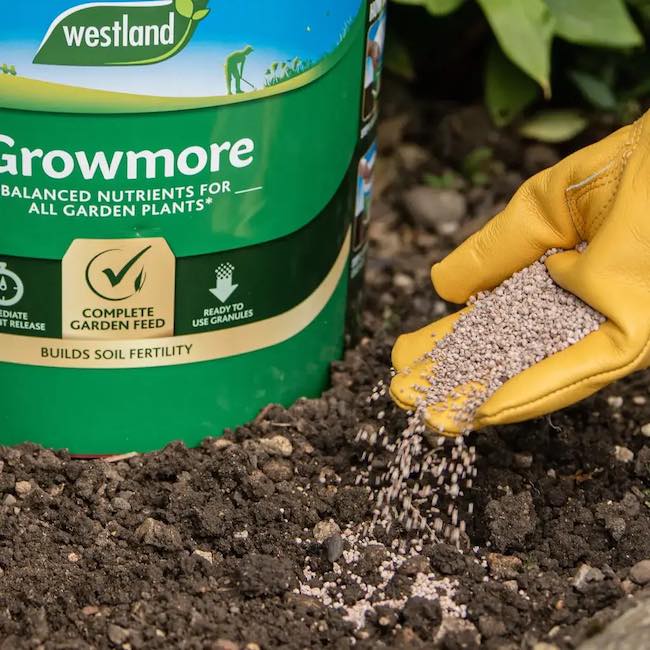Feeding Your Garden Plants A Guide to Nourishing Your plants

Maintaining a healthy garden requires more than just regular watering and occasional pruning. Proper nutrition is essential for your plants to thrive and produce vibrant flowers or delicious fruits. One crucial aspect of gardening is feeding your plants with the right fertilisers at the right time. In this article, we’ll delve into the best practices for feeding your garden plants to ensure optimal growth and productivity.
Choosing the Right Fertilisers
When it comes to feeding your garden, not all fertilisers are created equal. Different plants have varying nutrient requirements at different stages of growth. For general feeding, we recommend using Growmore fertiliser. This versatile fertiliser is suitable for most garden plants and can be applied once a year, either in spring or autumn.
To apply Growmore, simply scatter approximately one handful per square metre of soil or surface area of a container or pot. This granular fertiliser can be watered in or left to be washed in by the rain. However, since Growmore is granular, it may bounce off the plant’s leaves. It will eventually be washed through any ground weed sheeting or mulch layers around your plants.
Growmore is a low nitrate plant food, which means it won’t promote excessive green growth. Instead, it encourages flower and fruit production. However, if you need to stimulate green growth, such as when pruning overgrown plants, consider using Miracle-Gro fertiliser in the spring. Miracle-Gro is a high nitrate feed that promotes additional stem and leaf growth.
Feeding Schedule
After the initial feeding with Growmore, it’s essential to maintain a regular feeding schedule to ensure your plants receive adequate nutrition throughout the growing season. Ideally, feed your plants every 3 to 4 weeks from March until the end of October. Liquid tomato feed, which contains high levels of potash, is an excellent choice for regular feeding.
To make the feeding process easier, consider using a hose attachment feeder like the Aqua Mix 1.25L Hose End Sprayer. https://www.richardjacksonsgarden.co.uk/shop/tools-shed/watering/aquamix-1-25l-hose-end-sprayer-fertilisers/
This device allows you to apply liquid fertiliser directly through your garden hose, eliminating the need for mixing in a watering can. However, be sure to adjust the settings on the feeder according to your specific fertiliser and plant needs.
Specialist Feeds for Acid-Loving Plants
Some plants require specific soil conditions to thrive, particularly those that prefer acidic soil. Examples of acid-loving plants include camellias, rhododendrons, azaleas, and magnolias. These plants have evolved to grow in forest floors, where acidic conditions prevail.
In a garden setting, creating acidic soil conditions for these plants is essential. One way to achieve this is by using specialist feeds designed for acid-loving plants, such as ericaceous plant food. These fertilisers help maintain the correct pH levels in the soil, ensuring optimal growth and health for acid-loving plants.
Mulching for Acid-Loving Plants
In addition to specialised feeds, mulching is another important practice for maintaining acidic soil conditions. Acid-loving plants typically have shallow root systems that tend to grow upwards, rather than deep into the soil. Mimicking the natural leaf litter found on forest floors, mulching around the base of these plants with acid mulches like well-rotted farmyard manure or horse manure can provide essential nutrients and maintain acidity.
However, it’s essential to be cautious when using organic mulches, as they may contain weed seeds or pests. Always inspect mulch materials before applying them to your garden.
Feeding your garden plants is a fundamental aspect of gardening that directly impacts their growth and vitality. By choosing the right fertilisers and following a consistent feeding schedule, you can ensure that your plants receive the nutrients they need to thrive. Whether you’re nurturing general garden plants or specialised acid-loving species, proper feeding practices are essential for a flourishing garden.